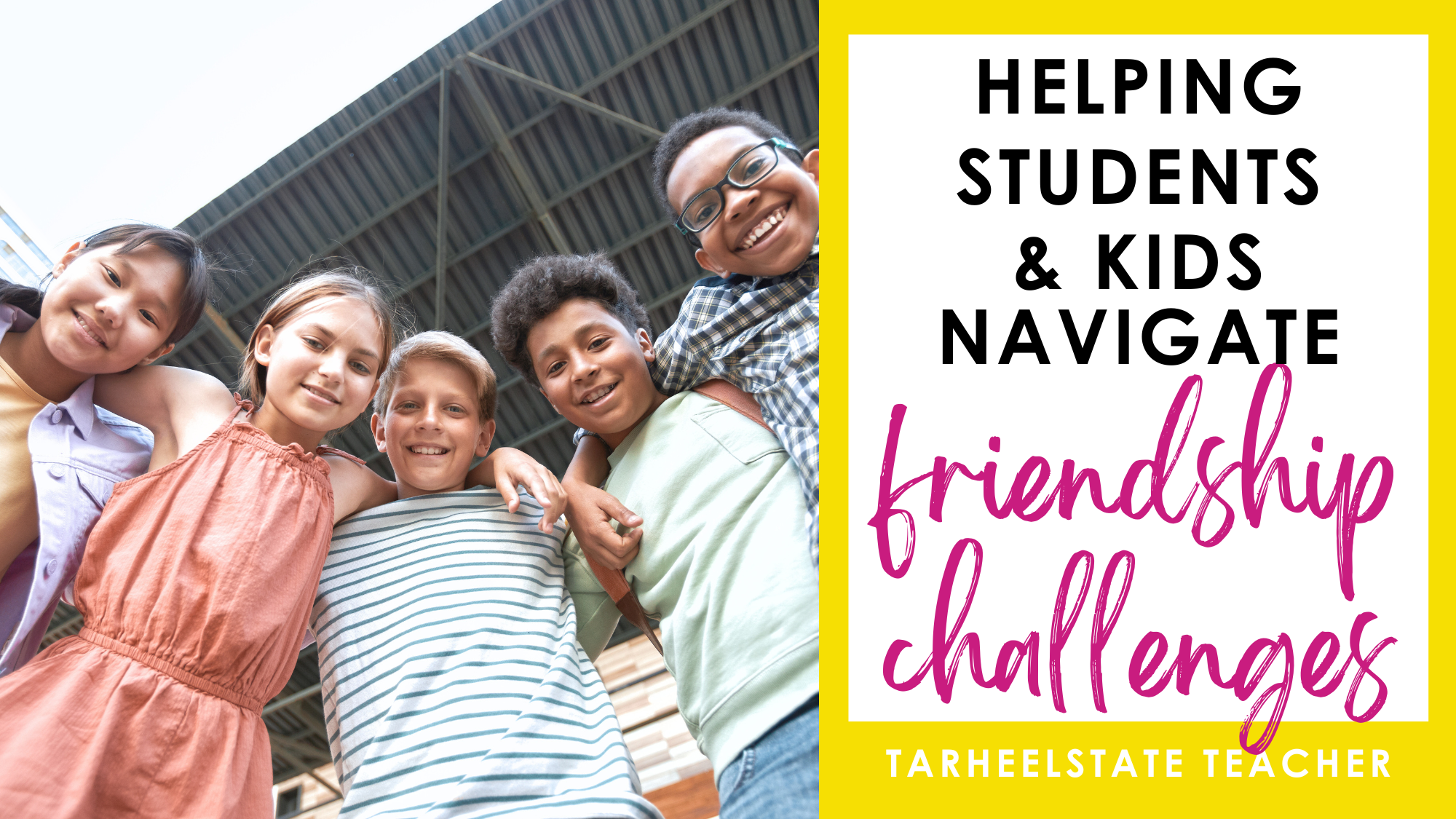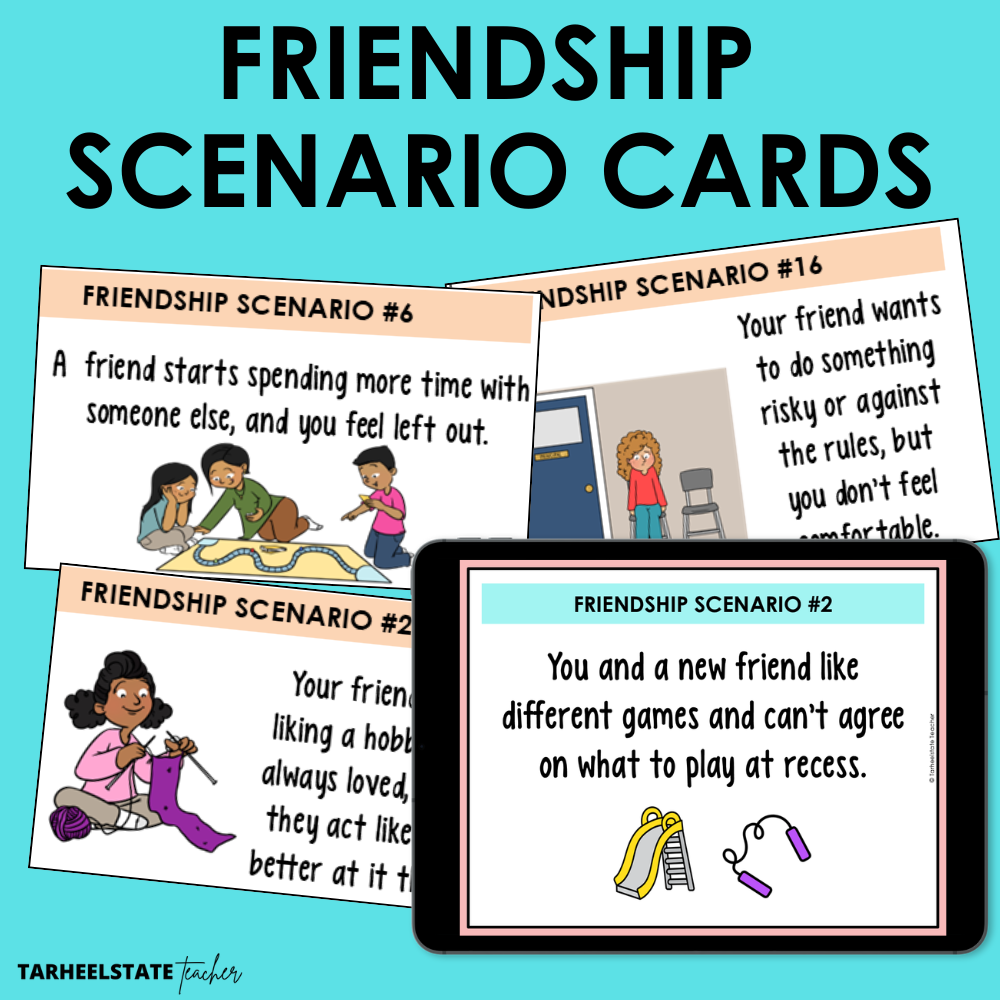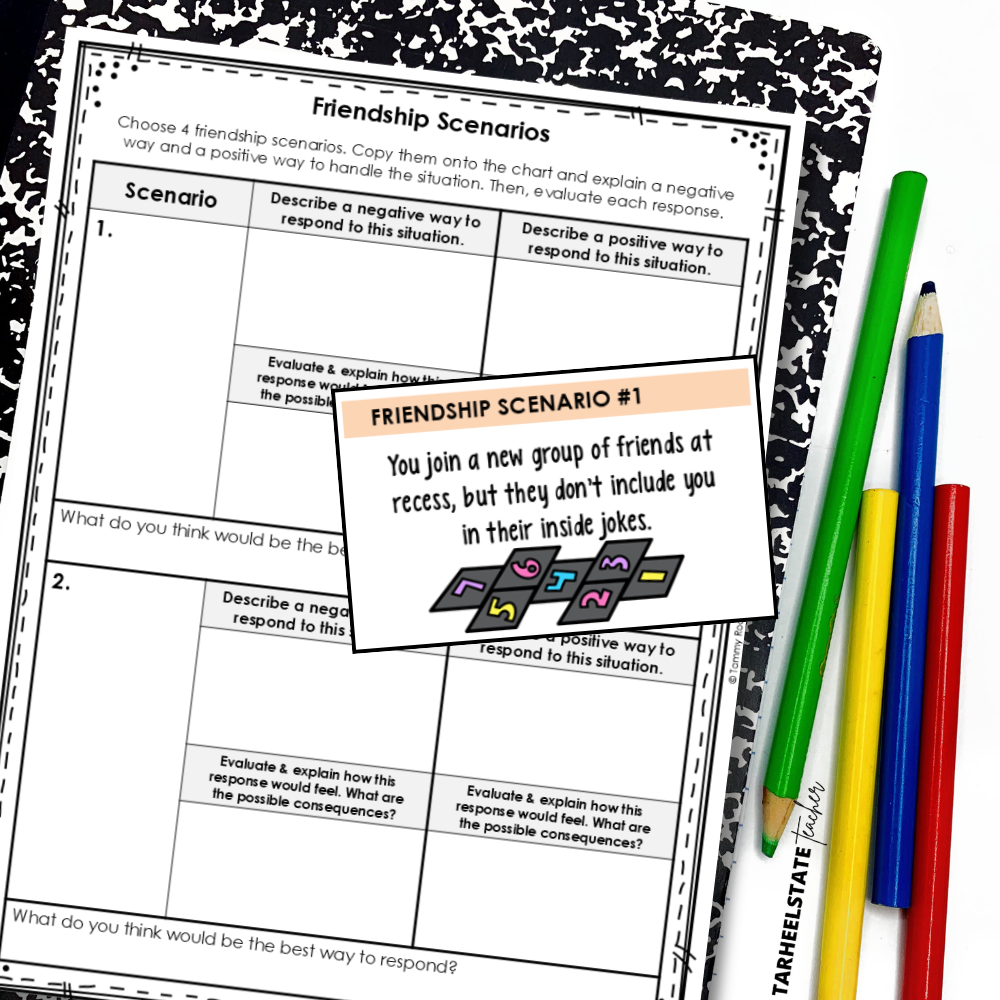How to Help Students Navigate Friendship Challenges with Relatable Friendship Scenarios
Have you ever watched two students fall out over something small—like a group project, a misunderstood comment, or even a game at recess? In an upper elementary classroom, friendship challenges happen regularly. While it’s tempting to step in and resolve the issue for them, these moments are rich opportunities to teach students how to manage friendship issues in meaningful, age-appropriate ways.
One of the most effective and engaging ways to support students during these tricky moments is through friendship scenarios. This post walks you through how to use relatable situations and role play to help students reflect on their actions, build empathy, and learn what it truly means to be a good friend.
🌟 Note: If you’re looking for ready-to-use friendship lessons, check out my post: How to Be a Good Friend: Lessons and Activities for Teaching About Friendship.
Why Teach Friendship Skills in Upper Elementary?
Students in grades 3–6 are navigating increasingly complex peer dynamics. Friendships shift frequently, cliques can begin to form, and misunderstandings can quickly escalate. Teaching them how to manage friendship challenges gives them lifelong skills like:
Communicating clearly
Setting boundaries
Practicing empathy
Resolving conflicts respectfully
When we give students tools to handle friendship issues, we help build a classroom culture of trust, kindness, and inclusivity.
These social-emotional lessons don’t just help students in the moment—they equip them with the tools they need to maintain healthier relationships throughout life. That’s why using friendship scenarios as learning tools is such a powerful strategy for helping students grow.
What Are Friendship Scenarios and HOW DO YOU USE THEM?
Friendship scenarios are short, realistic situations that mirror the kinds of social dilemmas students face every day—being left out, feeling annoyed with a friend, or not knowing how to stand up for someone. These situations encourage students to think critically, respond empathetically, and reflect on how to be a good friend.
You can use friendship scenarios in several ways:
As discussion starters during class meetings or SEL time
As journal prompts for individual reflection
In small groups for collaborative problem-solving
As the foundation for role play or drama centers
Each scenario gives students a structured way to explore tough social situations and rehearse positive responses before they happen in real life.
Friendship Scenario Cards for UPPER ELEMENTARY STUDENTS
To support students in building strong, healthy friendships, I created a set of Friendship Scenario Cards designed specifically for upper elementary learners. Each of the 32 cards presents a realistic friendship challenge that students might encounter in or out of the classroom. These scenarios are intentionally open-ended and thought-provoking, inviting students to reflect on different points of view and consider how their choices impact others.
Because the situations feel familiar and relevant, students are more engaged—and more willing to explore complex emotions, social dilemmas, and what it means to respond with empathy and respect. The flexibility of the cards also means they can be easily adapted to fit your classroom’s needs, whether you're focused on writing, discussion, group work, or social-emotional skill-building.
Here are a few examples of the kinds of friendship scenarios students will explore:
You’re working with a partner, and they keep ignoring your ideas. You’re starting to feel frustrated and hurt. What do you do?
Two of your friends are fighting, and they both want you to take their side. How do you handle it?
You were invited to a party, but one of your close friends wasn’t. They seem sad about it. What can you say or do?
You told a friend a secret, and they shared it with others. How do you address it?
These scenarios are about more than just solving surface-level problems—they help students dig into emotions, consider different perspectives, and think critically about how to be a good friend in real-life situations that can feel awkward, confusing, or emotionally charged.
Tips for leading Friendship scenario discussions
Whether you’re using the scenario cards for a whole-class discussion, partner role play, small group work, or independent reflection, it helps to have a few go-to strategies in mind to guide students through these situations thoughtfully. Here are some tips to help students engage meaningfully—no matter how you're using the scenarios in your classroom:
Set the tone first. Remind students that there are no perfect answers—these scenarios are meant to help us think, reflect, and grow. Encourage honesty and respectful listening.
Model your thinking. Walk through a scenario yourself and share your thought process out loud. This shows students how to unpack a situation and consider multiple perspectives.
Ask open-ended questions. Prompt deeper thinking with questions like:
“What might each person in this situation be feeling?”
“Have you ever experienced something like this before?”Use “I” statements. Encourage students to respond using “I would…” or “I feel…” to keep the focus on personal reflection instead of judging others.
Create space for multiple perspectives. Let students hear a few different ways someone might respond and discuss the pros and cons of each.
Follow up with reflection. Whether through journaling or a short group debrief, give students a chance to process what they’ve learned or how their thinking has shifted.
follow-up friendship activities
After students discuss or role-play a scenario, what next? Suggest a few simple, meaningful follow-ups:
Write a short reflection on how they would respond differently next time.
Create mini-skits based on alternative outcomes.
Pair scenarios with mentor texts that model friendship dynamics. (In my Friendship SEL Unit, I’ve included a list of my favorite friendship read alouds.)
Have students create their own scenario cards based on personal experiences (anonymously if needed).
NEED MORE FRIENDSHIP ACTIVITIES AND DONE-FOR-YOU RESOURCES FOR TEACHING FRIENDSHIP?
You can manage to do each of these activities with a reflection journal and materials you have around the classroom, but if you want some of the work done for you, you can check out my Friendship theme SEL unit. I use this unit for a 2-3 week morning meeting unit. It includes student journal pages, detailed and editable friendship lesson plans, bulletin board materials with friendship vocabulary and related friendship quotations, and Google Slides for the teacher and a digital student notebook.
This Friendship theme SEL unit is also included in the SEL Morning Meeting MEGA Bundle that contains 16 social- emotional learning themes. If you’re looking to increase your social-emotional learning focus, you’ve come to the right place!
SEL THEMES TO GUIDE YOUR MORNING MEETINGS ALL YEAR
With units focused on gratitude, empathy and compassion, growth mindset, conflict resolution and compromise, grit and perseverance, responsibility, understanding and managing emotions, and so much more, your engaging SEL or morning meeting plans are done for you and your students will love them!
If you purchase the bundle from my personal website store, you can save an additional 20% on the SEL Mega Bundle of all 16 topics with the code SEL20.






